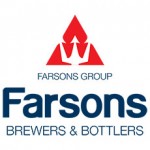Senglea and its Heritage – Città Invicta
On the evening of Friday 5th May, FAA members gathered at Valletta Customs House for a boat ride by dgħajsa to il Maċina Gate, Senglea, followed by a walking tour of the city led by experienced tour guide Vincent Zammit.
Mr. Zammit narrated the history of il Maċina Gate located in Dockyard Creek, (formerly known as Galley’s Creek). The Maċina is a wedge-shaped bastion with a large wooden crane which was mounted on top of the rampart, designed to hoist and mount masts on galleys or for de-masting galleys upon their arrival before their heavy cargo was offloaded for storage in a nearby magazzin. Maċina Gate was built in the early 17th century by Grand Master Alof de Wignacourt and was the headquarters for the Knight’s galleys, and it remained in use during the British period. On the opposite side of Galley’s Creek the Malta Maritime Museum now stands in place of 3 sheds where galleys had been built.
From here, FAA Members walked to the Church of Our Lady of Victories, where Mr. Zammit informed members that Senglea was named after Grand Master Claude de la Sengle, who built the city on two hills. One hill was occupied by two windmills, the other by St. Julians Church (now being restored). The Parish Church of Senglea, dedicated to Our Lady of Victories, was built in 1580 to commemorate the Great Siege of 1565 and subsequently became a Parish in 1581 having been part of the Parish of Birgu. The Church was consecrated in 1743, and in 1786 Pope Pius VI declared the church a “collegiate insignis”. In 1921 Pope Benedict XV honored the church with the title of Basilica. Sadly the Church was destroyed in January 1941 during an air-raid in WWII, but was rebuilt by 1956.
Inside the Church of ‘Our Lady of Victories’, Mr. Zammit talked about Confraternities that were formed in the Senglea Parish Church with the aim of collecting alms to aid the unfortunate. The ‘Confraternity of Charity and Holy Crucifix’ was set up to cover the costs of burials for the poor. The Confraternity with its charitable deeds attracted local common people to join as well as many intellectuals, artists, priests, and knights. The Confraternity organized processions in which 14 such members wore black hooded capes, and walked barefoot carrying candles. A 15th person collected money (alms), which ultimately financed the building of the Oratory and all its decorations from 1727 to 1733. Local Senglea-born craftsmen were entrusted with the building of the Oratory. Francesco Zerafa was the designer and master mason, and the popular stone-carver / sculptor and architect was Pietro Paolo Zahra (1685-1747) who embellished the Oratory in Baroque style sculptures. He consulted with designer Pietro Paolo Troisi (1686-1750), an outstanding Maltese Baroque artist in the preparation of models and designs. Zahra’s son, Francesco Vincenzo Zahra (1710-1773) became an extremely prolific artist renowned for his altarpieces in late Baroque style. Francesco produced four paintings and the renowned Mattia Preti two paintings which now adorn the upper part of the Oratory in between the pillars. In 1941, the Oratory of the Holy Crucifix escaped virtually unscathed from WWII bombing, whilst the city of Senglea and the Basilica were heavily damaged. After the war the Oratory was restored to its former glory.
Mr. Zammit then led the group to the defensive walls facing Corradino where soldiers could safely walk without being seen by the enemy. These fortifications were built as a result of the attack of 1551 by Ottoman Turks. After the attack, the Order of Saint John realized the need to build more defences, and a year later, two forts were built. The first of these was Fort St Elmo at the tip of the Sciberras Peninsula (now Valletta) which because of its commanding position became the command centre of the military area, while the second was Fort St Michael, built on the peninsula known as l’Isola at that time. The latter was demolished in 1921, but a small part of its base has survived (now a school stands on the site). Mr. Zammit then related stories of the fighting techniques used by the Maltese against the invading Turks, such as blocking the sea entrance between Senglea and Birgu with a chain positioned just below sea level; building a palisade across the Grand Harbour from Senglea to Valletta, hand to hand fighting, etc…
The group then walked up the alleyway steps to the Church of St. Philippe, formerly known as the Church of ‘Our Lady of Porto Salvo’, which stands very near the tip of Senglea. Here Mr. Zammit talked about the history of the Church and its decorations. The building of the Church in 1596, with its main entrance facing the Grand Harbour, was financed by donations from sailors and a few fishermen and was dedicated to ‘Our Lady of Safe Harbours’ (Porto Salvo). As the Dominicans didn’t wish to run the Church, it was taken over by the congregation who used local artists and craftsmen to expand and embellish it. In 1662, the Church was assigned to the Oratorians of St. Philip Neri, who rebuilt it and the adjoining convent in 1690. Soon its dedication to ‘Our Lady of Porto Salvo’ was forgotten and it became commonly known as the Church of St. Philip Neri. During the cholera epidemic in 1837 the convent and the church itself served as a quarantine hospital, receiving 685 infected victims of which 350 died. Between 1837 and 1850 the Church was used as a communal kitchen to serve the poor. In 1957, the Church was administered by the Jesuits until 2008 since which it has been in the gifted hands of the Salesian brothers.
Mr. Zammit drew the group’s attention to the Church’s five altars and interior, richly decorated with interesting works of art. The main altarpiece is an impressive work by Stefano Erardi (1630-1716) painted around 1690. Here, Our Lady of Porto Salvo is depicted pouring her blessings upon Grand Harbour. In the painting, she is seen accompanied by four other saints: St Paul and St Elmo (bottom left), and St Catherine of Alexandria and St Agatha (bottom right).
The walking tour ended back on the waterfront near to where it had begun and where FAA members thanked Mr. Vincent Zammit. On behalf of the FAA, Mr. Timothy Alden thanked all the FAA’s sponsors (Dhalia Real Estate, Firstbridge, Mizzi Motors, Davinci Health, Attard & Co Ltd) for making the event possible.
Derek Moss
FAA Volunteer.



